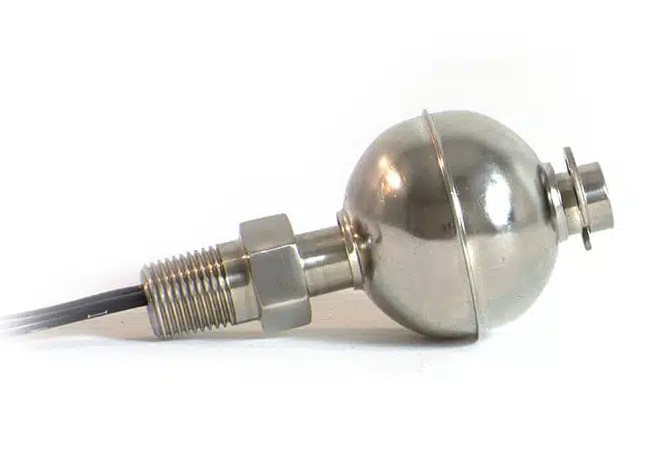Fluid level monitoring is crucial in industrial settings for maintaining machinery and chemical quantities, impacting productivity and safety. This blog explores effective, advanced methods for accurate, efficient, and reliable fluid level monitoring.
Traditional Fluid Level Monitoring Methods
The Old Guard
Historically, fluid level monitoring relied heavily on manual methods and basic mechanical devices. While functional, these methods have notable drawbacks.
Drawbacks of Manual Methods
- Inaccuracy: Manual readings often suffer from human error and inconsistencies.
- Labor-Intensive: Frequent manual checks are labor-intensive and time-consuming.
- Safety Concerns: Manual checks can expose staff to hazardous environments.
Why We Need Better Solutions
Given these inefficiencies, it’s clear that the industry needs more advanced solutions. Tools that not only deliver accurate measurements but also streamline the monitoring process without compromising safety are essential.
Advanced Fluid Level Monitoring Technologies
The Modern Approach
Thanks to technological advancements, modern fluid-level monitoring solutions have emerged that address the drawbacks of traditional methods. These technologies utilize advanced sensors and digital interfaces to provide real-time, accurate fluid-level data.
Benefits of Modern Technologies
- High Accuracy: Digital sensors, along with strategically placed float switches, eliminate the inaccuracies associated with manual readings.
- Automation: Automated systems reduce the need for manual checks, saving labor and time.
- Safety: Remote monitoring capabilities enhance safety by minimizing the need for personnel to enter hazardous areas.
Exploring Effective Fluid Level Monitoring Solutions
Ultrasonic Sensors
Ultrasonic sensors measure fluid levels by emitting sound waves and measuring the time it takes for the waves to bounce back from the surface of the fluid.
- How They Work: These sensors use the speed of sound in air to determine the distance to the fluid surface.
- Advantages: They are non-invasive, easy to install, and provide accurate readings.
- Applications: Commonly used in water treatment plants and chemical storage tanks.
Radar Sensors
Radar sensors operate on principles similar to ultrasonic sensors but use electromagnetic waves instead of sound waves.
- How They Work: These sensors emit microwave signals and measure the time delay of the reflected signals.
- Advantages: They are highly accurate and unaffected by temperature, pressure, or vapor.
- Applications: Ideal for harsh environments such as oil refineries and chemical plants.
Capacitive Sensors
Capacitive sensors measure changes in capacitance caused by the presence of a fluid between two electrodes.
- How They Work: The sensor detects changes in the electric field caused by the fluid’s dielectric properties.
- Advantages: They are highly sensitive and suitable for detecting various fluid types.
- Applications: Often used in food and beverage industries and pharmaceutical manufacturing.
Best Practices for Implementing Fluid Level Monitoring Systems
Selecting the Right Solution
When choosing a fluid-level monitoring system, consider factors such as the type of fluid, the environmental conditions, and the required accuracy.
- Fluid Type: Different fluids may require different sensor technologies.
- Environmental Conditions: Harsh conditions may necessitate more robust sensor types.
- Accuracy Requirements: Higher accuracy needs may drive the choice of more advanced technologies.
Installation Tips
Proper installation is crucial for the optimal performance of fluid-level monitoring systems.
- Follow Manufacturer Guidelines: Adhering to installation guidelines ensures the accuracy and reliability of the sensors.
- Regular Calibration: Periodic calibration helps maintain sensor accuracy over time.
- Routine Maintenance: Regular maintenance checks prevent sensor degradation and ensure long-term reliability.
Training and Integration
Ensure that your team is trained on the new systems and that the monitoring systems integrate well with your existing processes.
- Employee Training: Proper training helps maximize the benefits of the new technology.
- System Integration: Seamless integration with existing systems enhances overall operational efficiency.
Future Trends in Fluid Level Monitoring Technology
IoT Integration
The Internet of Things (IoT) is set to revolutionize fluid-level monitoring by enabling real-time data collection and remote monitoring through interconnected devices.
- Benefits: Enhanced data analytics, predictive maintenance, and improved decision-making.
- Examples: Smart sensors that provide real-time updates to centralized monitoring systems.
AI and Machine Learning
Artificial Intelligence (AI) and Machine Learning (ML) are poised to further enhance fluid-level monitoring systems by enabling predictive analytics and automated decision-making.
- Advantages: Improved predictive maintenance, anomaly detection, and optimized resource management.
- Applications: AI-driven analytics platforms that predict equipment failure and optimize fluid usage.
Sustainable Solutions
Sustainability is becoming increasingly important, and fluid-level monitoring technologies are evolving to support eco-friendly practices.
- Green Technologies: Sensors that minimize energy consumption and support water conservation efforts.
- Eco-Friendly Materials: Development of sensors made from sustainable materials.
Conclusion
Efficient fluid level monitoring is essential for industrial engineers and maintenance technicians striving to improve operational efficiency and safety. By transitioning from traditional methods to advanced technologies like ultrasonic, radar, and capacitive sensors, businesses can achieve greater accuracy, automation, and safety in their fluid monitoring processes.
